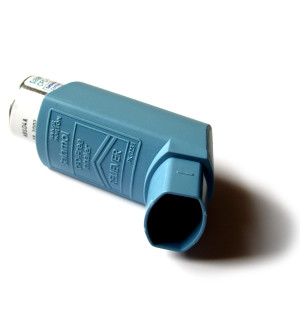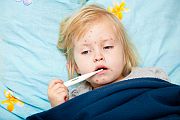- Navigating Your Midlife Crisis: Embracing New Possibilities
- City Raccoons Showing Signs of Domestication
- Mapping the Exposome: Science Broadens Focus to Environmental Disease Triggers
- One Week Less on Social Media Linked to Better Mental Health
- Your Brain Changes in Stages as You Age, Study Finds
- Some Suicide Victims Show No Typical Warning Signs, Study Finds
- ByHeart Formula Faces Lawsuits After Babies Sickened With Botulism
- Switch to Vegan Diet Could Cut Your Greenhouse Gas Emissions in Half
- Regular Bedtime Does Wonders for Blood Pressure
- Dining Alone Could Mean Worse Nutrition for Seniors
1 in 8 U.S. Kids Not Protected Against Measles: Report


In a finding that underscores the dangers of not vaccinating all children for measles, researchers estimate that one in eight American children are vulnerable to this highly infectious disease.
The statistics are even more troubling for younger children: Almost a quarter of those under the age of 3 are susceptible to catching measles.
“We simply cannot take our eye off of this disease,” said Dr. David Kimberlin, a professor of pediatric infectious diseases at the University of Alabama at Birmingham, who was not involved in the study. “These new data show that we have not done as well with this as we should.”
Lead author Robert Bednarczyk is an assistant professor of global health and epidemiology from the Rollins School of Public Health at Emory University in Atlanta. He and his colleagues analyzed the results of a national survey of immunizations among U.S. adolescents, covering the years 2008 to 2013. Based on their analyses, the authors estimated that of the roughly 70 million children under the age of 17, almost 9 million lack immunity to measles. Some children cannot be vaccinated, whereas others are unvaccinated or under-vaccinated.
The results are to be presented Thursday at Infectious Diseases Week, the annual meeting of specialists in infectious illness, in San Diego. The findings should be considered preliminary because they have not appeared in a peer-reviewed journal.
Measles is a viral disease that was responsible for 400 deaths a day globally in 2013, according to the World Health Organization. Typical symptoms are a fever, a runny nose and a rash that spreads over the body.
It is among the most contagious of vaccine-preventable diseases because it can pass from person to person through the air, after a cough or sneeze. People can be contagious before they show symptoms, according to the U.S. Centers for Disease Control and Prevention, boosting the risk of spreading infection.
Some people cannot be vaccinated for medical reasons such as an allergy to a vaccine component. This group relies for protection on what is known as herd immunity, the buffer that immunized people provide.
According to Bednarczyk and his colleagues, for measles, at least 92 percent of the “herd” needs to be immune to protect those who can’t be vaccinated, a group that includes infants. The first of the two-shot series of the measles-mumps-rubella vaccine is given when children are 1 year old.
“Right now, in the older ages, we see immunity levels greater than 92 percent, which should be adequate to prevent sustained measles transmission,” said Bednarczyk, “but we do not have a very wide buffer.”
The researchers estimated that elementary school students hover near the 92 percent mark, but they report that preschool children have the lowest levels of immunity.
Kimberlin sees these estimates as worrisome. “If measles vaccination rates decline further and pass below the threshold required for community immunity, it is certain that measles will establish a foothold again in the U.S. and that American children will suffer,” he said.
If lower vaccination rates erode the buffer too much, Bednarczyk agreed, “we are at risk of seeing more outbreaks after measles importations [from other countries] and potentially sustained measles transmission.”
The United States declared sustained in-country transmission of the disease eradicated in 2000. Until the current decade, case numbers remained low. But according to the CDC, 2011 saw a bump in cases, and 23 outbreaks in 2014 added up to more than 600 cases.
So far this year, there have been 189 cases of measles in the United States, part of five outbreaks. According to the CDC, measles travels to the United States by way of infected individuals exposed overseas, and most infected people are not vaccinated.
“Because it is so contagious, and because it is still common in other parts of the world, it is incredibly important to maintain very high immunization rates among U.S. children,” said Kimberlin. “You never know when someone visiting from another country will import the virus.”
More information
Visit the U.S. Centers for Disease Control and Prevention for more on measles.
Source: HealthDay
Copyright © 2025 HealthDay. All rights reserved.










